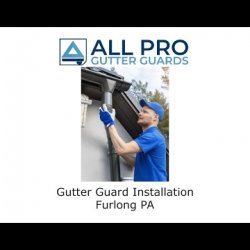tips-for-diy-gutter-installation-success

Gutters are an essential part of any home, helping to protect the foundation and structure from water damage. While hiring a professional gutter installer is always an option, many homeowners choose to tackle the project themselves. With the right tools, knowledge, and a bit of elbow grease, DIY gutter installation can be a rewarding and cost-effective endeavor. In this comprehensive guide, we will provide you with tips and techniques for achieving success with your DIY gutter installation project.
Introduction to Gutter Installation
Gutter installation is a crucial aspect of maintaining your home’s structural integrity. Properly installed gutters help to channel rainwater away from the foundation, preventing water damage and potential issues such as mold growth and foundation erosion. While hiring a professional gutter installer can be convenient, many homeowners opt to take on the task themselves to save money and customize their gutters to suit their preferences.
<iframe src="” width=”560″ height=”315″ frameborder=”0″ allowfullscreen>
Why Choose DIY Gutter Installation?
DIY gutter installation offers several advantages, including cost savings, customization options, and the satisfaction of completing a home improvement project on your own. By taking on the task yourself, you can also ensure that the gutters are installed correctly and according to your specific needs.
Types of Gutters: Materials, Styles, and Sizes
gutter repair services near me
Before embarking on your DIY gutter installation project, it’s essential to familiarize yourself with the various types of gutters available. Gutters come in a range of materials, styles, and sizes, each offering unique benefits and considerations.
<iframe src="” width=”560″ height=”315″ frameborder=”0″ allowfullscreen>
Materials
- Aluminum: Lightweight and rust-resistant Vinyl: Affordable and easy to install Steel: Durable but prone to rust Copper: Elegant and long-lasting
Styles
- K-style: Traditional profile with decorative edges Half-round: Curved shape for a classic look Box gutters: Deep profile for high capacity
Sizes
- Standard sizes: 5-inch or 6-inch widths Oversized gutters: 7-inch or larger widths for increased water flow
Gutter Installation Techniques and Best Practices
Proper gutter installation requires careful planning and attention to detail. By following best practices and utilizing the correct techniques, you can ensure that your DIY gutter installation project is successful.
Planning
Measure the roofline accurately to determine the length of gutters needed. Consider the slope of the roof when positioning downspouts. Plan for adequate drainage away from the foundation.
Installation
Start by attaching gutter hangers along the fascia board. Secure gutters in place using screws or rivets. Connect gutter sections with sealant or connectors. Install downspouts at strategic locations for proper drainage.
Safety Tips
Use a sturdy ladder with a stabilizer when working at heights. Wear gloves to protect your hands from sharp edges. Work with a partner for added safety and assistance.
Seamless Gutter Systems: Advantages and Installation Process
Seamless gutter systems offer several benefits over traditional sectional gutters, including reduced leaks and improved aesthetics. While seamless gutters require special equipment for installation…
Continue writing content according to this format…






Ingen kommentarer endnu